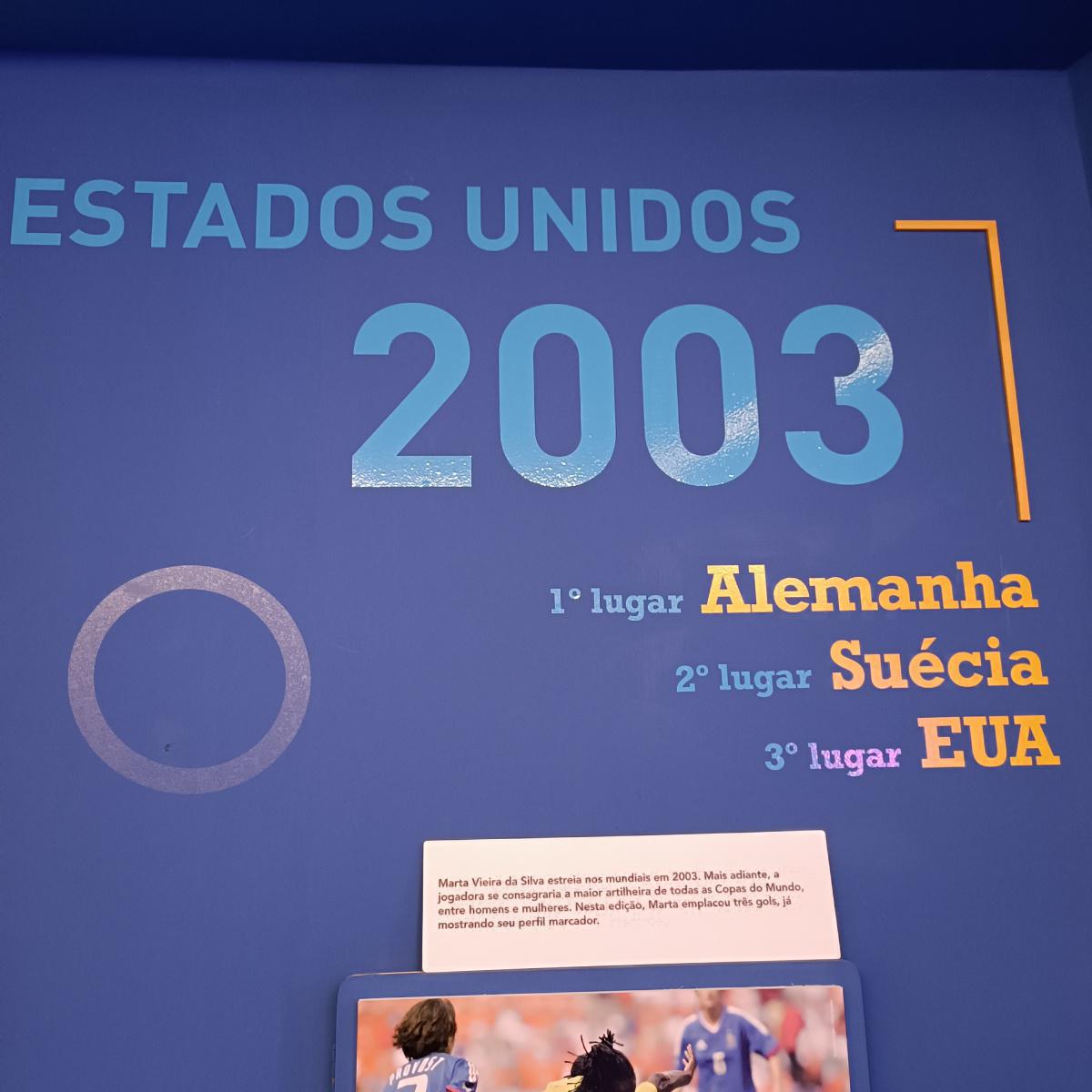Champions:
1st place: Germany; 2nd place: Sweden; 3rd place: United States
Queens of the Future
The renovation in the field
China was preparing to host another World Cup when the reception was postponed by an outbreak of the disease Sars (Severe Acute Respiratory Syndrome). The World Cup was transferred to the United States, the previous host, which saw its selection take third place, marking its presence on the podiums of all official World Cups until then. However, it was the turn of consistent Germany to take the title, with emphasis on the performance of Birgit Prinz, who won the first best player award offered by FIFA to women.
The Brazilians reached the quarterfinals with a team that combined veteran and new players, showing a renewal of great quality. Among the world debutants was Marta Vieira, already on her way to becoming the greatest player in the history of the modality.
BOX
With a lot of struggle, women were also conquering space in the technical staffs. For the first time, the command of the three winning teams - Germany, Sweden and the United States - was in the hands of female coaches.
Acknowledgments:
1) Kátia Cilene won the Bronze Shoe, with four goals
History:
Kátia Cilene
Anyone who saw Kátia Cilene advancing towards the goal with her long and elegant strides would not be surprised by the dilemma that surrounded the athlete in the early years of her career. The “carioca” started in football when she was already training athletics, and for a few years she reconciled both sports. Standout in the hurdle jump and heptathlon modality (in which she was Pan-American champion, in 1995), Kátia decided to concentrate on football, in which she gained notoriety as a decisive striker. In 1996, she was part of the Brazilian national team at the Atlanta Olympic Games, and at the 2003 World Cup, she won the Bronze Shoe, scoring four goals in four games. Right personal decision, Kátia: women's football is grateful for the choice.
Curiosities:
Argentina, France and South Africa debut in the Cup!
The protective helmet used by athletes from the Brazilian National Team was sponsored by the company that manufactured the item.
Highlight:
Birgit Prinz (GER)
Subtitles
Team photo
Standing, from left to right: Juliana Cabral, Andreia Suntaque, Renata Costa, Daniela Alves, Kátia Cilene and Tânia Maranhão. Crouched: Formiga, Maycon, Marta, Simone Jatobá and Rosana Augusto.
Birgit Prinz
The German Birgit Prinz made history in football with her talent. She is among the best scorers in history, with 14 goals – the second place, next to the American Amy Wambach. She was awarded the best player by FIFA in 2003, 2004 and 2005.
Coaches – TEXT BOX (we put together wall text with caption, so this is not a caption)
With a lot of struggle, women were also conquering space in the technical teams. For the first time, the command of the three winning teams - Germany, Sweden and the United States - was in the hands of female coaches. In the photo, trainers Tina Theune, from Germany, and Marika Domanski-Lyfors, from Sweden.
Caption Marta tactile panel (accessibility creates)
Marta Vieira da Silva debuts at the world championships in 2003. The player would become, in the future, the top scorer of all World Cups, between men and women. In this edition, Marta scored three goals, already imposing her scoring profile.


